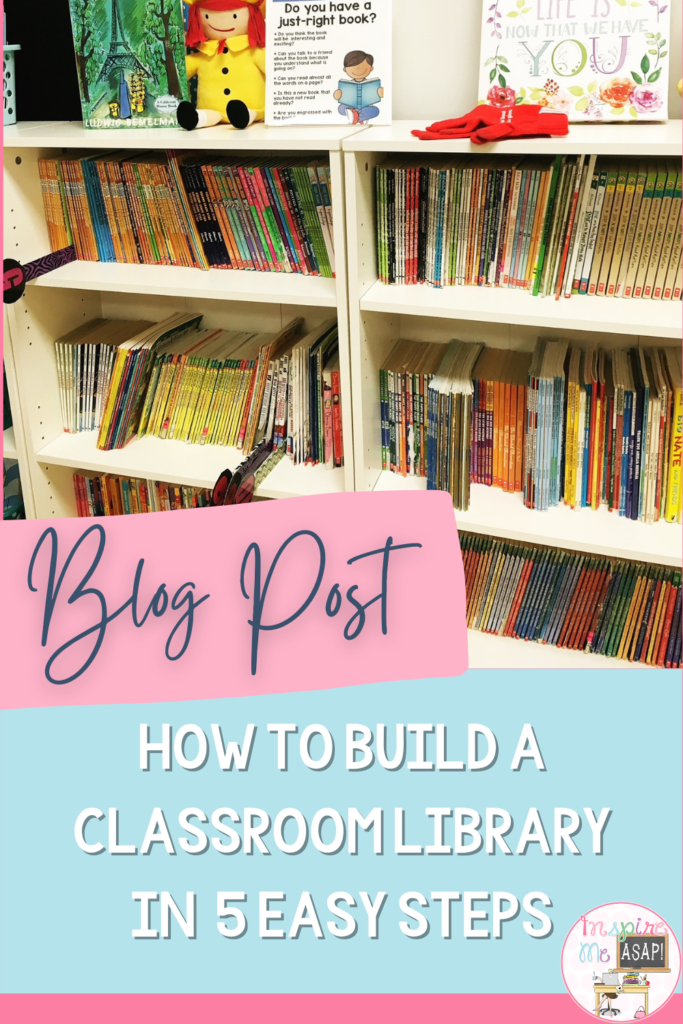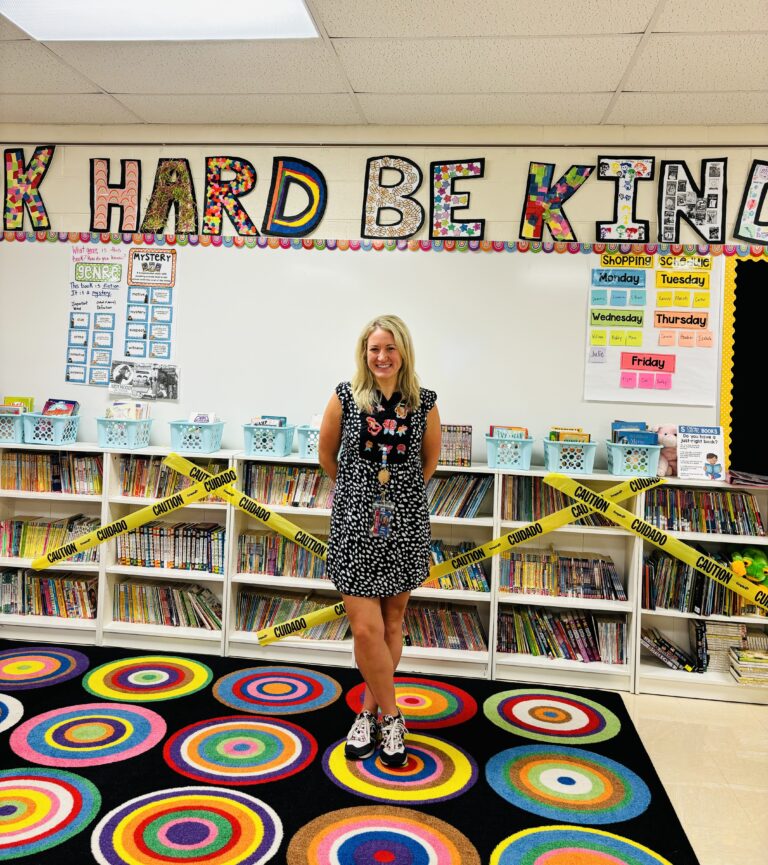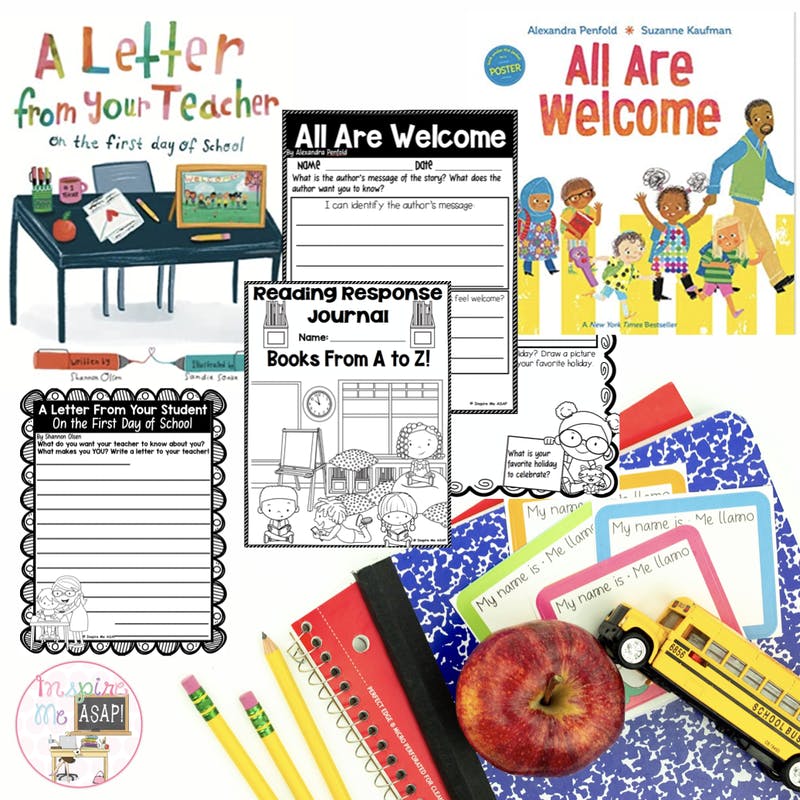Setting up a classroom library can be overwhelming, especially if you are just starting out! Whether you are just starting, have switched subjects to teach reading, or have been teaching for a while and are looking for a refresh, these tips will surely get you on your way!

Step One: Gather Books
Finding books that your students will love to read can be tricky, especially if you are a new teacher just starting out, need a lot of books, and are on a tight budget. Over the years, I have found books for my classroom library in some very interesting places. You can’t say teachers aren’t resourceful!
Where can I find books to build my classroom library?
- Goodwill- The bookshelves at Goodwill have been goldmines for popular and gently used books for my students. I have found books for as little as a quarter each!
- Facebook Marketplace or Craigslist- It is easy to search for books on these platforms and just go pick them up!
- Garage Sales- Next time you are driving around town on the weekend, look for garage sale signs and go check them out! Often, families or even teachers are getting rid of all kinds of great things for the classroom!
- Free/Donation Table at School- Schools often have a designated space where teachers can set out things they want to get rid of at the beginning and end of the year. Even librarians set out discarded books from the library!
- Donations- Parents or communities can donate books and other classroom items at any point in the year. I love using an Amazon wishlist and having the items sent directly to my school!
- Scholastic Book Clubs- Many schools participate in Scholastic Book Clubs. Students are given flyers each month to buy books, and for each purchase they make, the classroom teacher earns points that can be redeemed for books and other classroom supplies for free!
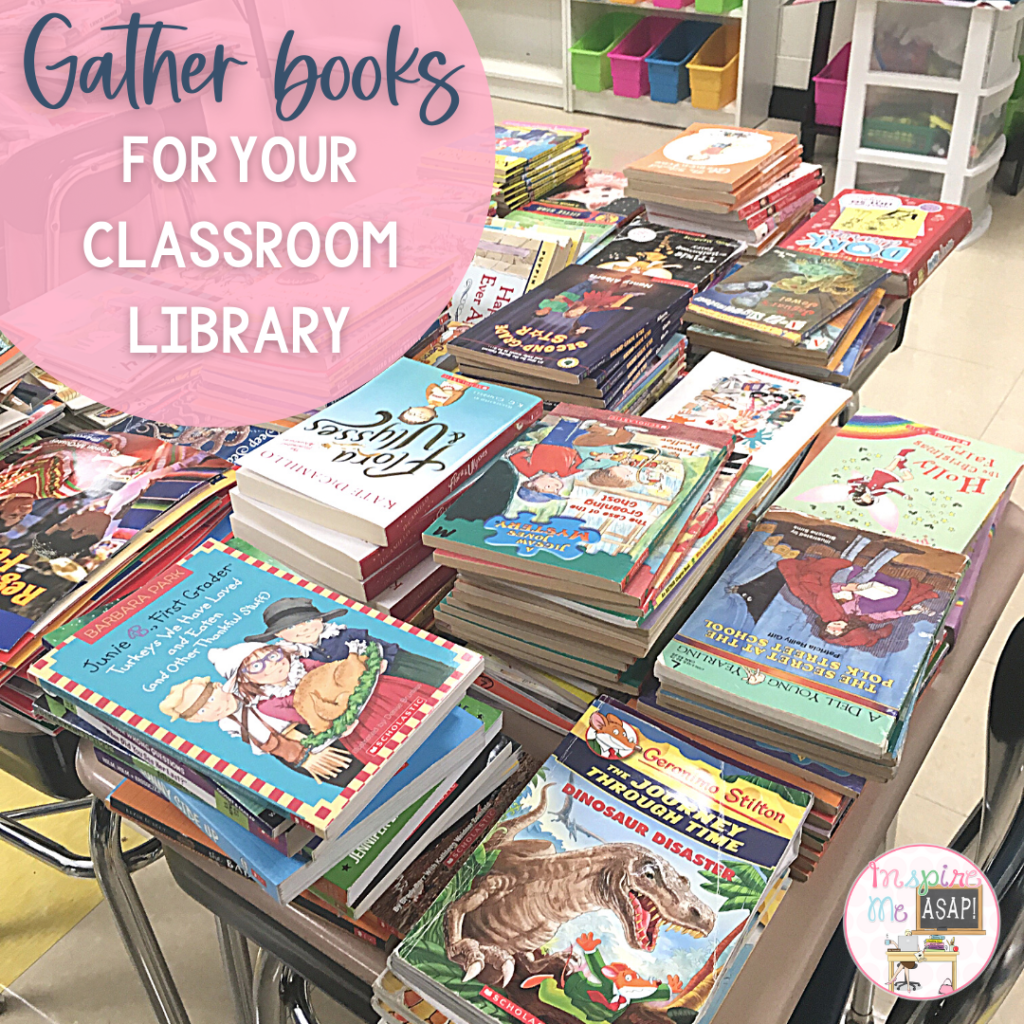
Step Two: Set Up the Space for Your Library
Look at your entire classroom space and decide where you would like your library to be.
Be sure to think about these questions:
- Is it easy to access?
- Does it flow well with the other spaces in your room?
- Can you still monitor students when they are using the library?
- How will students use the space?
- How will I make it a safe, comfortable, welcoming space?
- Will more multiple students need to access the library at one time?
The easier your classroom library is to use, the more likely students will use it regularly!
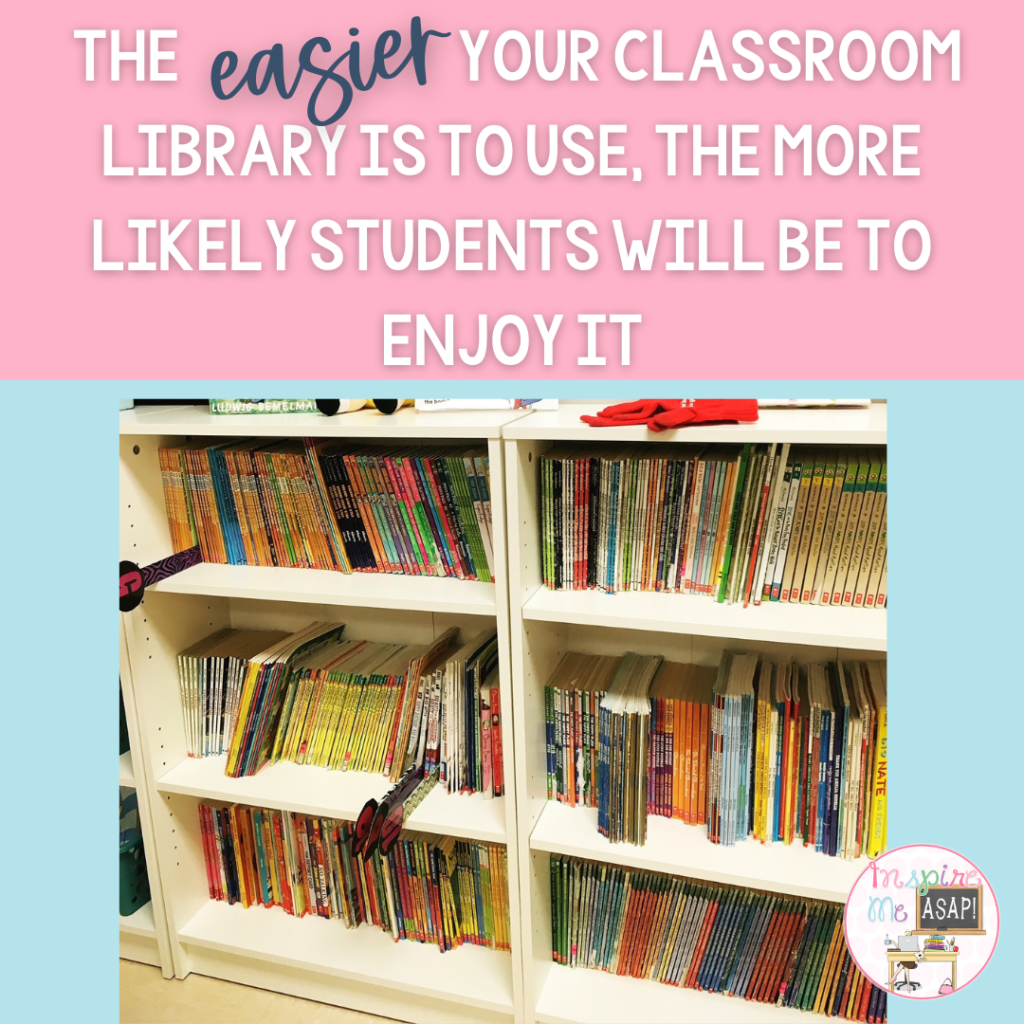
Step Three: Ensure You Have a Diverse Selection of Books Available
One of the most important things you should do when curating your library is to make sure it is diverse! There should be books about all kinds of subjects, interests, and people included in each classroom library.
Examine your library through the eyes of ALL students…even students who are not represented, or you don’t think are represented in your particular classroom. All students should not only be able to find books that relate to themselves, but they should also find books about other types of people.
Do students have mirror books (books about themselves) and window books (books about others) available?
I find it helpful to use a detailed checklist of what to look for when going through the books in a library. I have used this classroom library and curriculum inventory from NYU Metro and Steinhart for years and recommend it to all teachers! It really breaks down each area to look for and is perfect for evaluating the curriculum you teach as well!
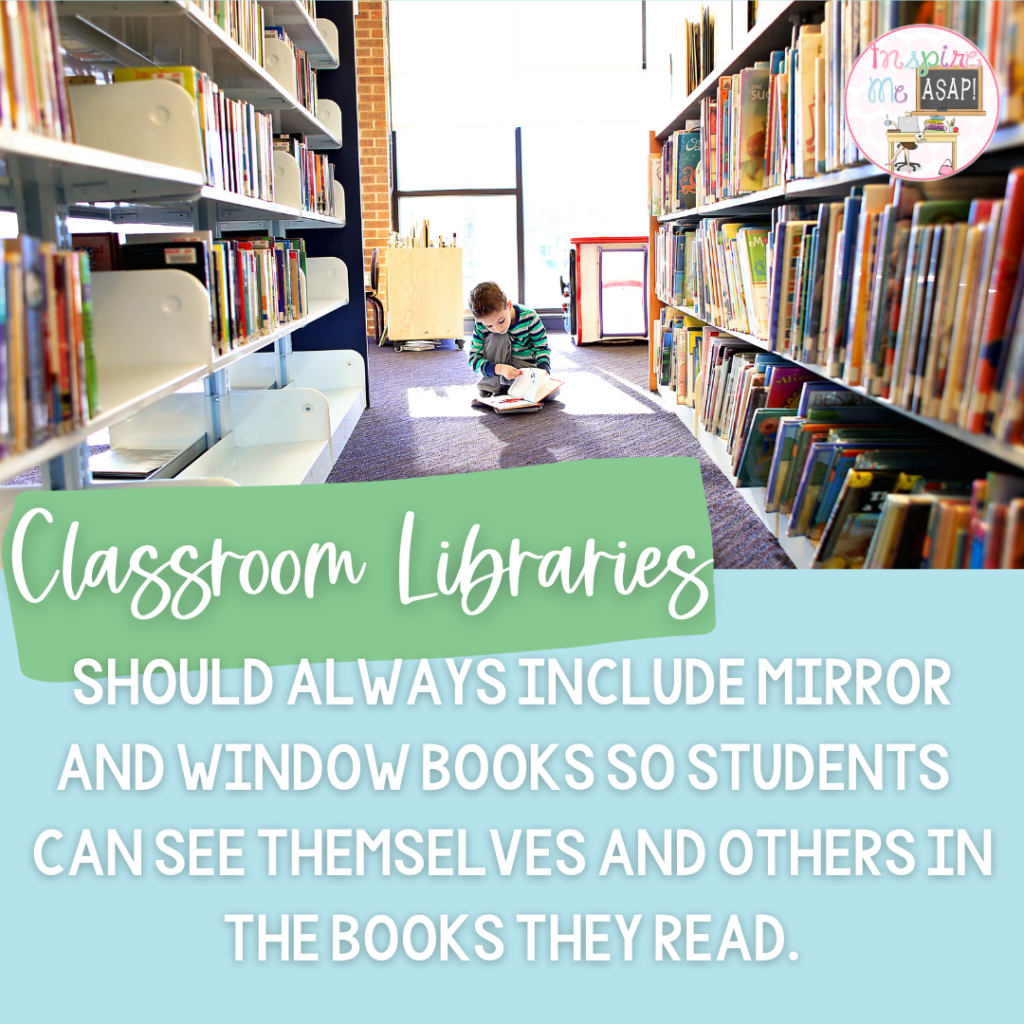
Step Four: Organize Your Library
Gone are the days of sorting books by reading levels. Sorting by reading level limits student choice and makes finding books about specific topics more challenging for students. Students may feel like they have to stick to reading books at “their level” and avoid taking reading risks, preventing them from growing as readers. This could also lead to students making fun of any students on a lower “level,” further diminishing their confidence. Students should have access to any book they’d like to read to build up their reading confidence and make reading more FUN!
Books can be split into fiction and nonfiction sections or sorted by genres or topics. Then, books should be alphabetized by author name. This way, students get to know and understand how bookstores and libraries are organized. They become more self-sufficient in locating books they’d like to read.
Want to learn more about how my students use stick holders to keep our classroom library organized? Check out my YouTube video!
Now it’s time to get all these amazing books onto your selves! Many teachers use bins, baskets, or labels to organize their libraries. Other teachers just use alphabet markers to separate Whatever method makes sense to you and your students works here!

Step Five: Host a Library Opening
That’s right! Host a library opening! During the first week or two of school, block your library with caution tape while taking some time to learn about classroom expectations and rules. This builds excitement and anticipation for the library opening date. You could decide on and post a date on the board too!
When the big day arrives, you could decorate your room like a red carpet opening or with other special decorations or music. Then, model taking a book from the library shelves, reading it aloud, and then placing it back on the shelf. If you have a book ABOUT books, this is perfect here! Have students notice what you did and create a class anchor together of the expectations with the library. Use the rest of class time, letting students practice taking books and enjoying reading them!
Want to learn more about how I host a grand opening of my classroom library? Watch my YouTube video!
You now have some easy, straightforward steps for getting your classroom library up and running. Your students will be so excited to use it all year long!
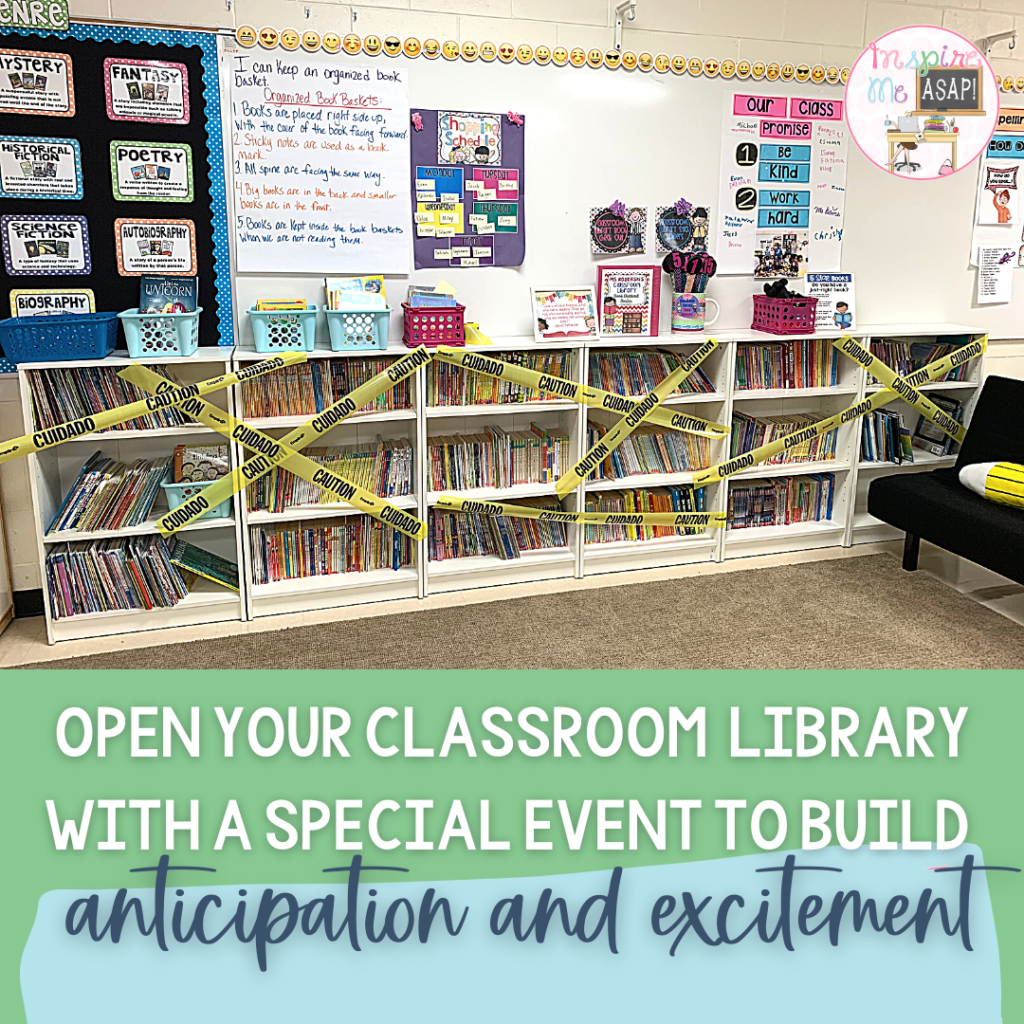
What are some of your favorite ways to organize your classroom library? I’d love to hear from you!
Do you love these ideas? Pin the image below to save!
